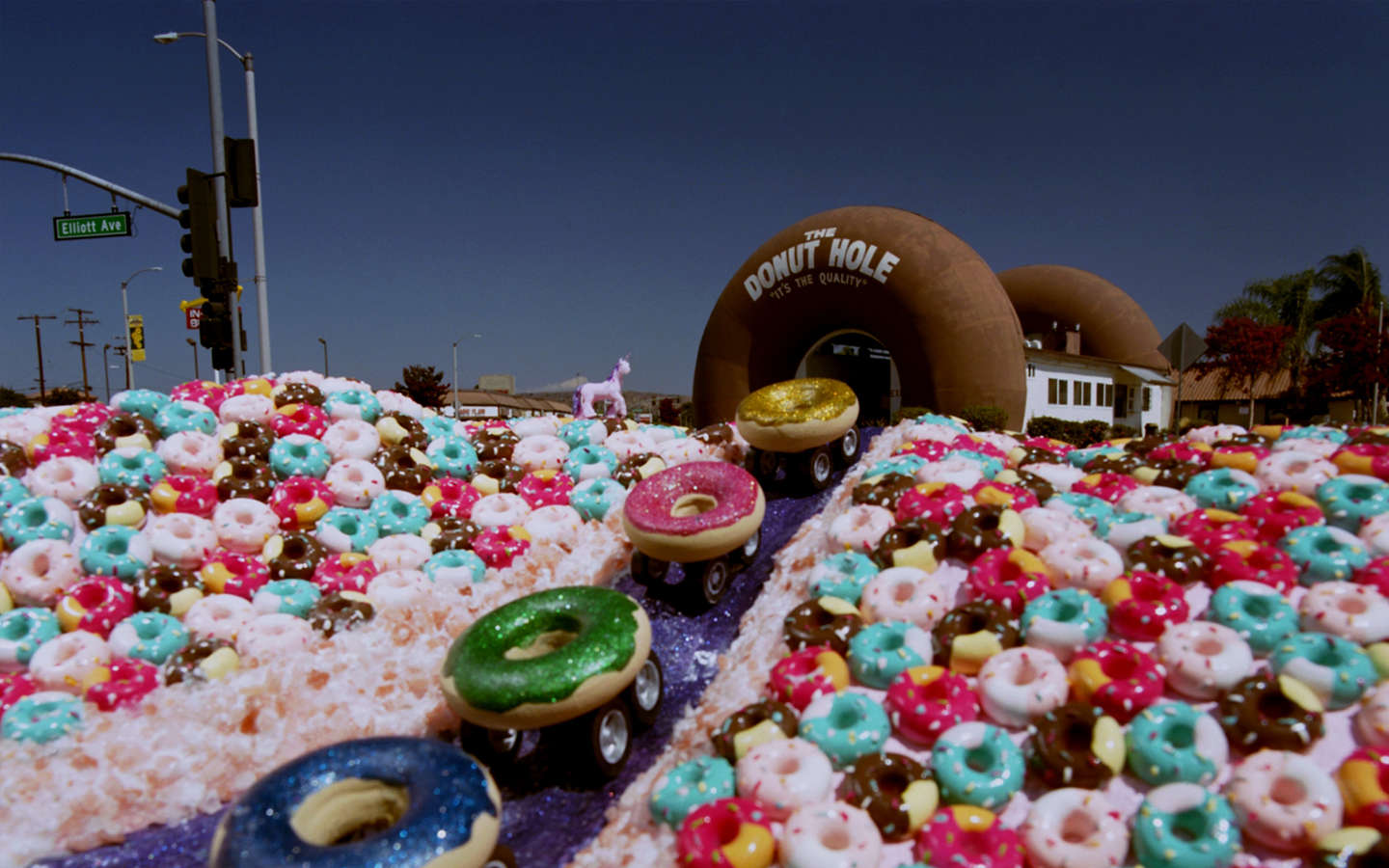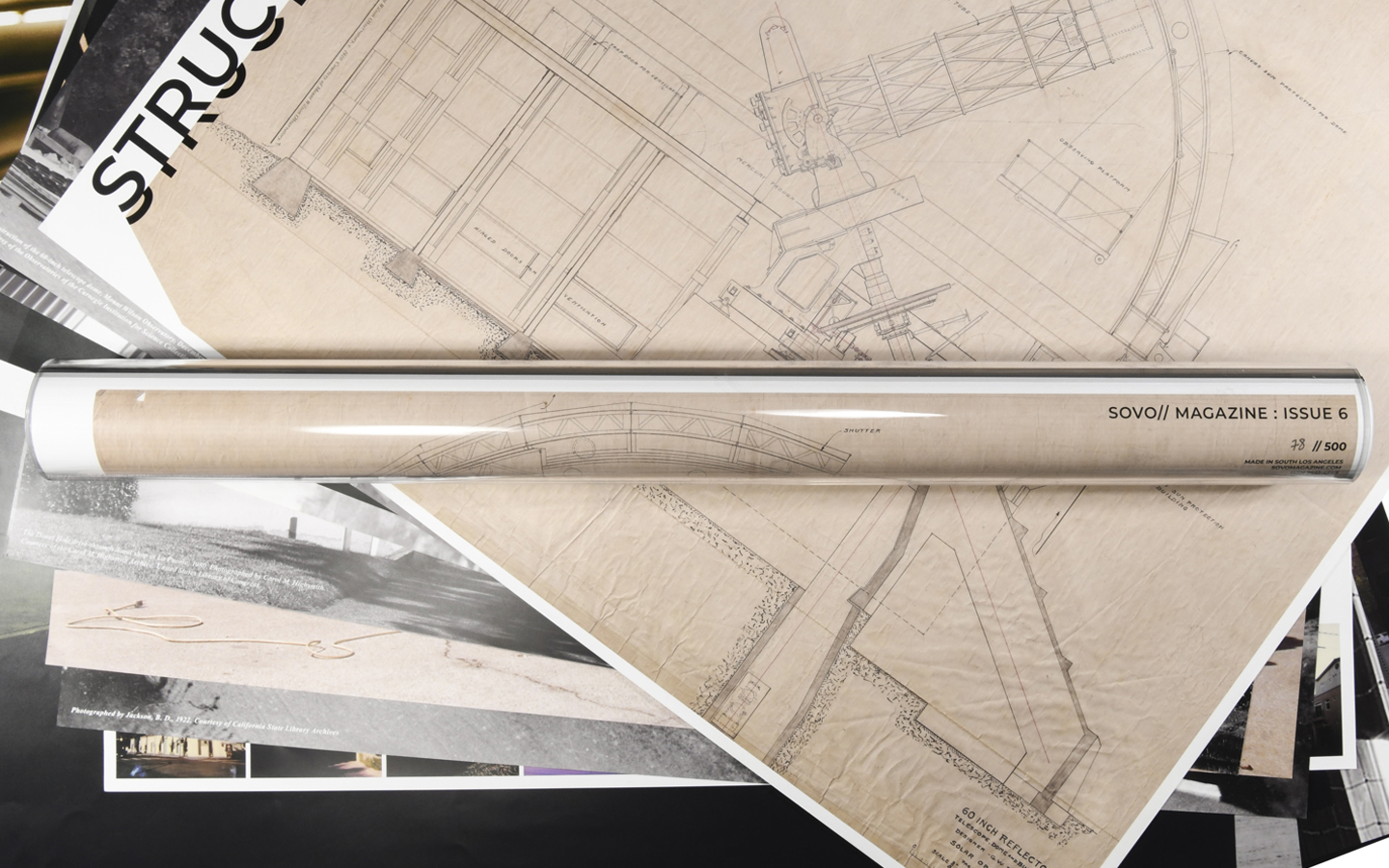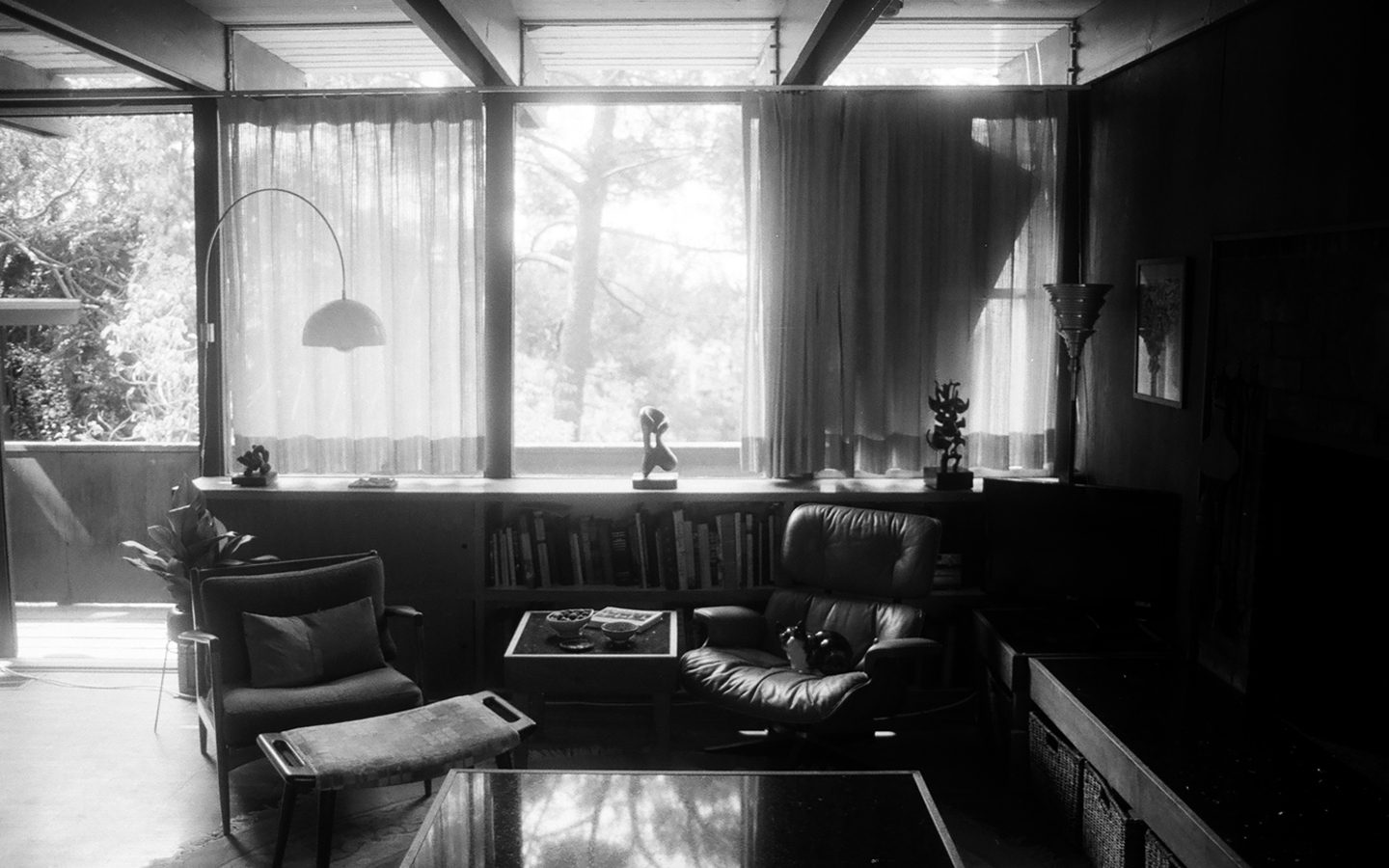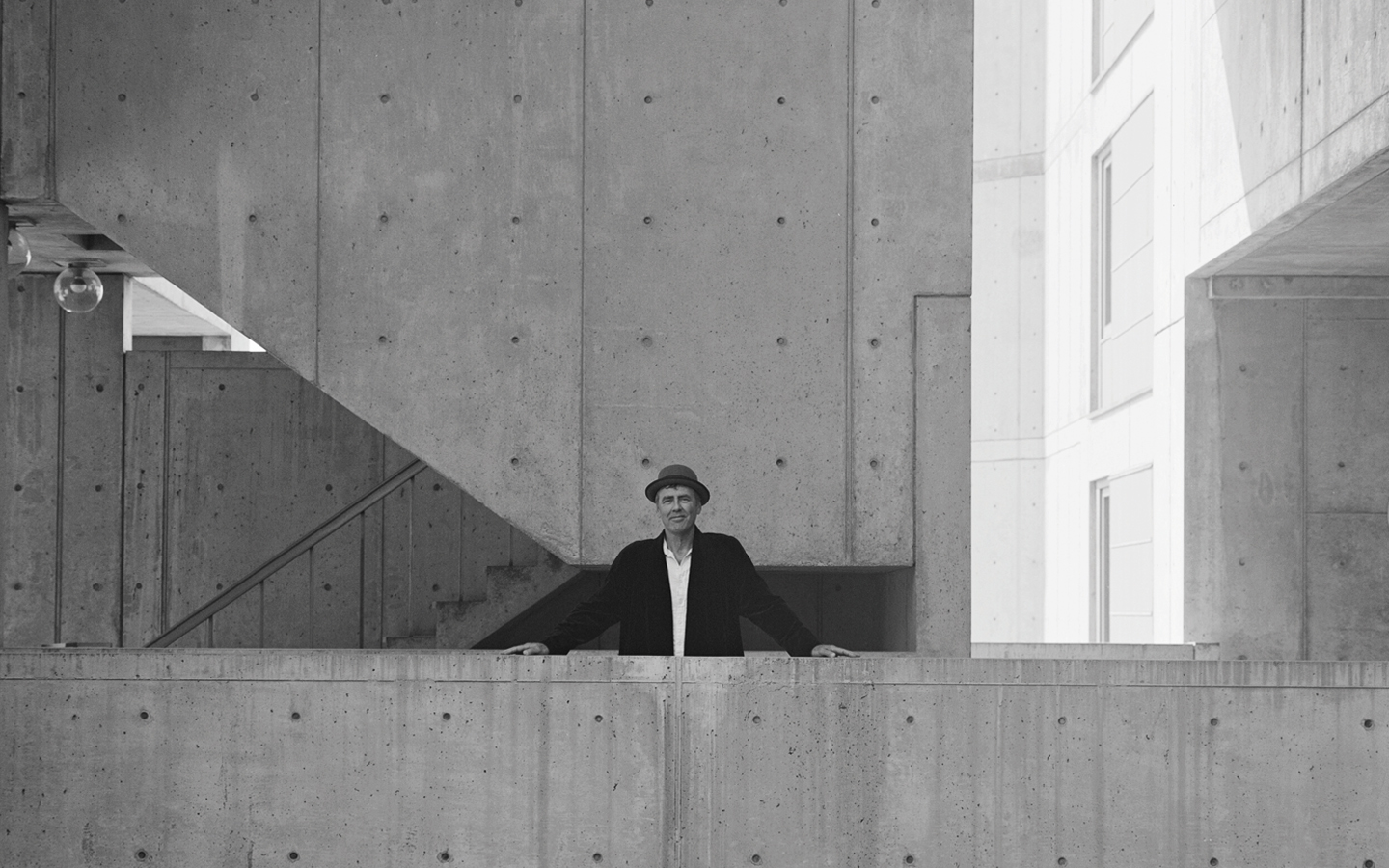
Programmatic Roadside Vernacular
CALIFORNIA CRAZY
TEXT CAYLIN ELLOWITZ
VISUAL JEFF LEAVITT
WHAT THE HELL ARE THESE, AND HOW DID THEY HAPPEN?
You may have seen programmatics and not known what they were; you may have seen them and been curious. Buildings that resemble not-buildings or cartoon buildings. Giant tamales housing hair salons, cruise ships containing Korean cafes, huge binoculars, that giant barrel in the Valley. Why are they like that? Who built them, and how? How many are there? Alternatively referred to as “California Crazy,” “mimetic,” “novelty,” and “roadside vernacular,” the phenomenon of these wild structures is not a California exclusive, but we certainly did it most frequently and exuberantly. The peak of popularity for programmatic architecture was between the late 1920s and mid-1930s, a time when Los Angeles had lots of cheap open space and cars were coming to power as the dominant mode of transportation. These buildings, often designed to resemble the item they traded in (but not always), were meant to be seen and read from the road at a distance, from a car. In my mind, they’re tied up with the early twentieth-century entertainment crazes like flagpole sitting and phone booth stuffing, and those dance contests that went on for days. They were advertising stunts as much as anything, but they were designed to be fun, and they’re a link to the past that even the youngest viewer, or person least interested in history, might appreciate. One of my favorite things about this type of architecture is that these buildings were built by layperson business owners and prestigious architectural firms alike, and they appealed to the same clientele and passerby, whether grand or humble.
The confluence of factors coming together to create an environment for these buildings to spring up was wide. People were speeding along streets faster than ever before, creating a need for businesses to stand out and communicate effectively and quickly. Easterners and Midwesterners were arriving in droves to a place they thought of as having no history or traditions, and they felt free to try new things. The influence of the movie industry was creating an atmosphere of dreamy unreality and temporary diversion. This was a time in LA where anything could go. Many of the businesses that built programmatic buildings were one-offs, but there were chains, too. Some lasted only a few years, some were built after the golden age of programmatic construction, and some of the originals are still with us today.
WHY DID THEY DISAPPEAR, AND WHERE CAN WE STILL SEE THEM?
Photos of these buildings reveal that they stood in a completely different Los Angeles than the one we love today. Their Los Angeles did not press anyone to consider the efficiency of the space they used, nor did it expect to be taken seriously as a major economy or cultural center, but LA was changing rapidly. As WWII approached and moods sobered, programmatic building trailed off. Construction was becoming more expensive, and war industries and their workers crowded the city, making land valuable. Styles began to change, too. Art Deco’s newer iteration, Streamline Moderne, began to gain favor and become widespread, and for a while there was room for crossover, as seen in the Cross Roads of the World, built in 1936 and still standing at Sunset and Las Palmas. A village of shops, constructed in different historical and international styles, clustered around a Streamline building in the shape of an ocean liner, the Cross Roads of the World is an oasis of calm and quiet in central Hollywood, and a classic example of both programmatic and Streamline architecture. Soon after this hybrid took shape, buildings began to take on less literal representations of speed and futuristic aspiration. After the war, expansive lawns and plentiful parking began to be replaced with denser housing and more modern and permanent buildings and businesses.
As you can imagine, the reuse of a programmatic building for new business after the original had gone was problematic. It happened occasionally, as in the case of the Pumpkin Palace roadhouse—a giant pumpkin, which was reused briefly as the Valley Gospel Center before being torn down—but finding new tenants for these weird buildings was typically an uphill battle. Often, the building had to be changed enough so that the new business didn’t look like the old business, resulting in some buildings that looked like they didn’t know what they were trying to be. Shifting tastes and the growing accumulation of wealth in LA brought new kinds of structures that strove to create a cohesive civic fabric and reflect its growing influence and importance, so survivors from the programmatic era are often grand examples—such as Samson Tire and Rubber Co.’s Assyrian Palace tire factory in Commerce, known today as the Citadel Outlets, and Grauman’s Egyptian and Chinese theaters—or movable, like Tail O’ The Pup (technically not part of the original wave of programmatic buildings because it was built in 1946), which survives because it has been able to relocate several times when the lot it sat on was redeveloped. Though the popularity of these buildings waned, the need for roadside readability and eye-catching advertising was still strong, and the flamboyant and spirited signage of the mid-century (think Randy’s Donuts and animated neon) took its place.
LOST BUT STILL CASTING A SHADOW OVER LA
The Brown Derby, a hat-shaped restaurant topped with a hat-shaped sign inviting patrons to “eat in the hat,” which opened in 1927, was perhaps the most famous of the programmatic buildings. This was possibly because it stood across the street from the Coconut Grove at the Ambassador Hotel—a favorite nightclub of celebrities and movie industry people—and became a great place to see and be seen, but also perhaps because it lasted as long as until 1980, had multiple locations around LA (unfortunately none of these were hat-shaped), had a couple of revival attempts, and now lives again at Disney’s Hollywood Studios in Orlando.
MODERN EXAMPLES
Why was the Hollywood & Highland mall built to resemble a Babylonian city? D.W. Griffith’s 1916 film Intolerance was filmed on this corner, or at least the sequences taking place in Babylon were, and the set stood for years after the film’s blockbuster release. The shopping center’s architects paid homage to Hollywood history and maybe inadvertently to LA’s historical programmatic architecture, too. Named S.S. Moonlight and S.S. Encinitas, they have remained private residences throughout their lives and are some of the most beloved buildings in Encinitas. The Encinitas Preservation Association, their owner since 2008, held a community party for the unveiling of the national historic landmark designation plaque in October 2019.
Café Jack, a Koreatown café and tarot parlor shaped like the Titanic, was hand-built by owner Jack Shin and opened in 2007. Shin wanted his own Titanic after seeing the blockbuster film, and still loves the film and his luxury liner today.
The Google Binoculars Building, formerly an advertising agency, is a collaborative design between architect Frank Gehry and artists Claes Oldenburg and Coosje van Bruggen Studio. It’s been a Venice landmark since it opened in 2001 and stands as a great example of programmatic revival architecture.
Carsland, that glorious tribute to Route 66, neon signage, and American car culture at Disney’s California Adventure, features a tribute to the many tipi-shaped motels of yore in its Cozy Cone Motel, a grouping of giant orange traffic cone bungalows around a freestanding lobby.
That giant lemon-shaped lemonade stand you sometimes see at the fair. A classic archetype of programmatic architecture, it’s petite, easily read from a distance, sells what it is, and is so much fun.
GOOD NEWS FOR WHAT’S LEFT
This July, California’s State Historical Resource Commission voted unanimously to allow the addition of the Boat House apartments in Encinitas to the National Register of Historic Places, hopefully paving the way for the acquisition of grant money needed to restore them to their 1928 glory. These two apartments, in two boat-shaped buildings, were built by Miles Kellogg, an inventor, builder, and businessman whose father had been a sea captain, using wood recycled from nearby buildings that were being dismantled. They have remained private residences throughout their lives and are some of the most beloved buildings in Encinitas. The Encinitas Preservation Association, their owner since 2008, intends to throw a party for the unveiling of the national historic landmark designation plaque in October 2019.
Idle Hour in North Hollywood, restored to perfection by the good people of local bar and restaurant firm 1933 Group, is open for business and has been thriving since reopening in 2015. One of several giant barrels which could be found in Los Angeles and beyond in the early part of the twentieth century, this bar had been a Valley landmark since it opened in 1941, but stood abandoned for several years before its rehabilitation.
Tail O’ the Pup, a hotdog-shaped hotdog stand that opened in 1946 on the corner of Beverly and La Cienega, moved several times and then disappeared into storage when it closed in 2006. Fortunately, it has also been purchased with the intent of restoration and re-launch by the very same 1933 Group. Plans to reopen the Pup by several other developers and restaurateurs fell apart in the time between its closure and its move to the Valley Relics Museum in Chatsworth, including an idea by Rick Caruso that it would come to live at the Grove. 1933 Group is still actively searching for the Pup’s forever home and has not yet announced an opening date.
Photographer and author of several books on the subject of American roadside attractions, programmatic buildings, and wild signage, John Margolies’s archive of 11,710 images taken over 40 years beginning in 1970 were purchased by the Library of Congress and released in 2016 into the public domain for your wistful viewing pleasure and free use.
These weird and fantastical buildings, though so few now, are still a part of the California landscape and imagination. Track them down and enjoy their novelty, imagine the long-lost LA that created them, and thank your lucky stars that we’ve saved a little space for them in our future—so far.




